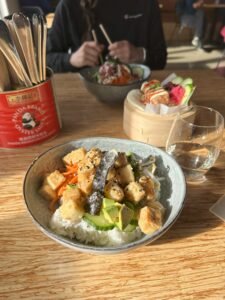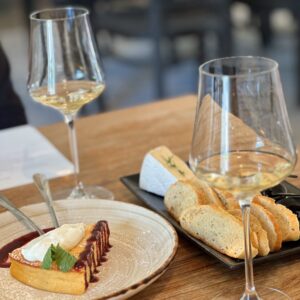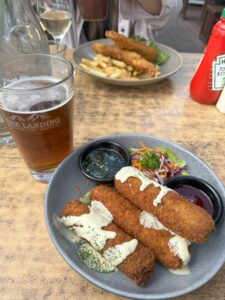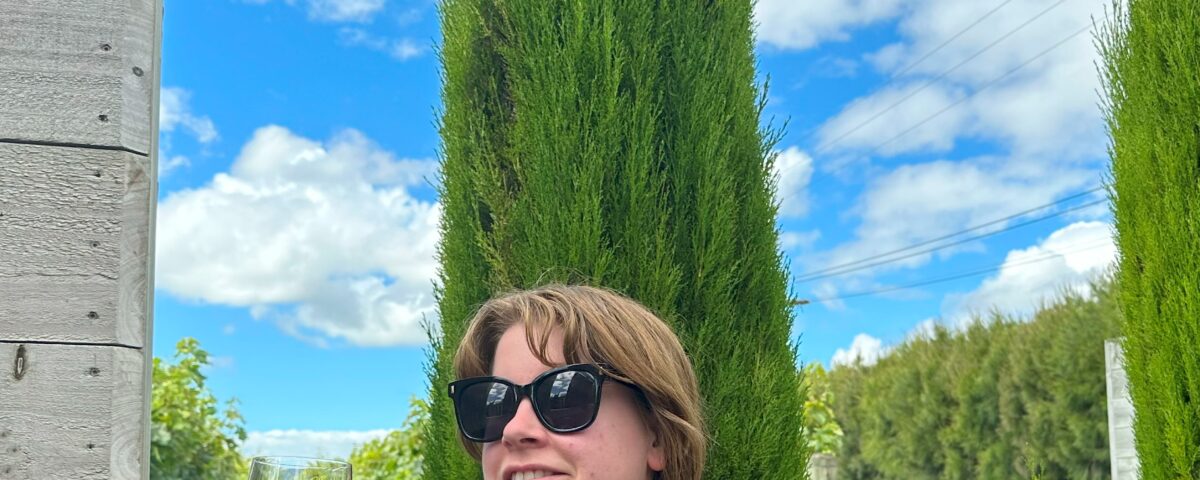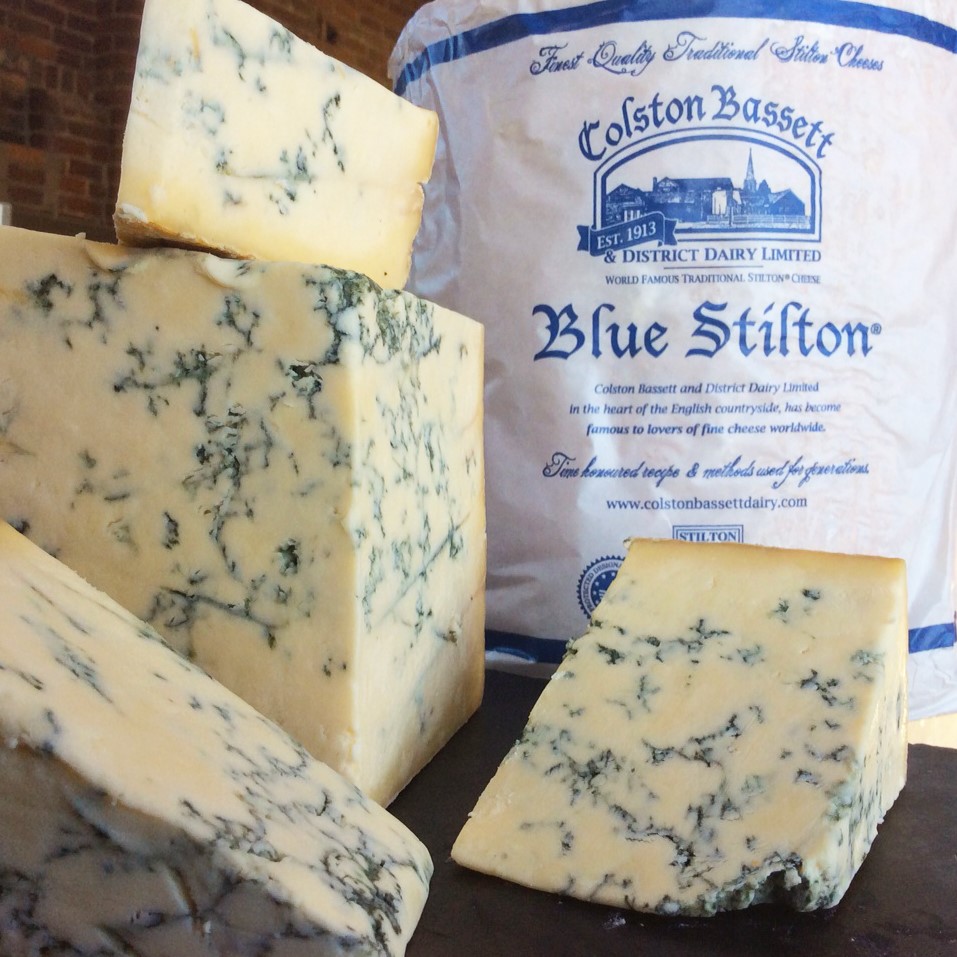
Soul-Warming Cheeses & Seasonal Traditions
May 3, 2023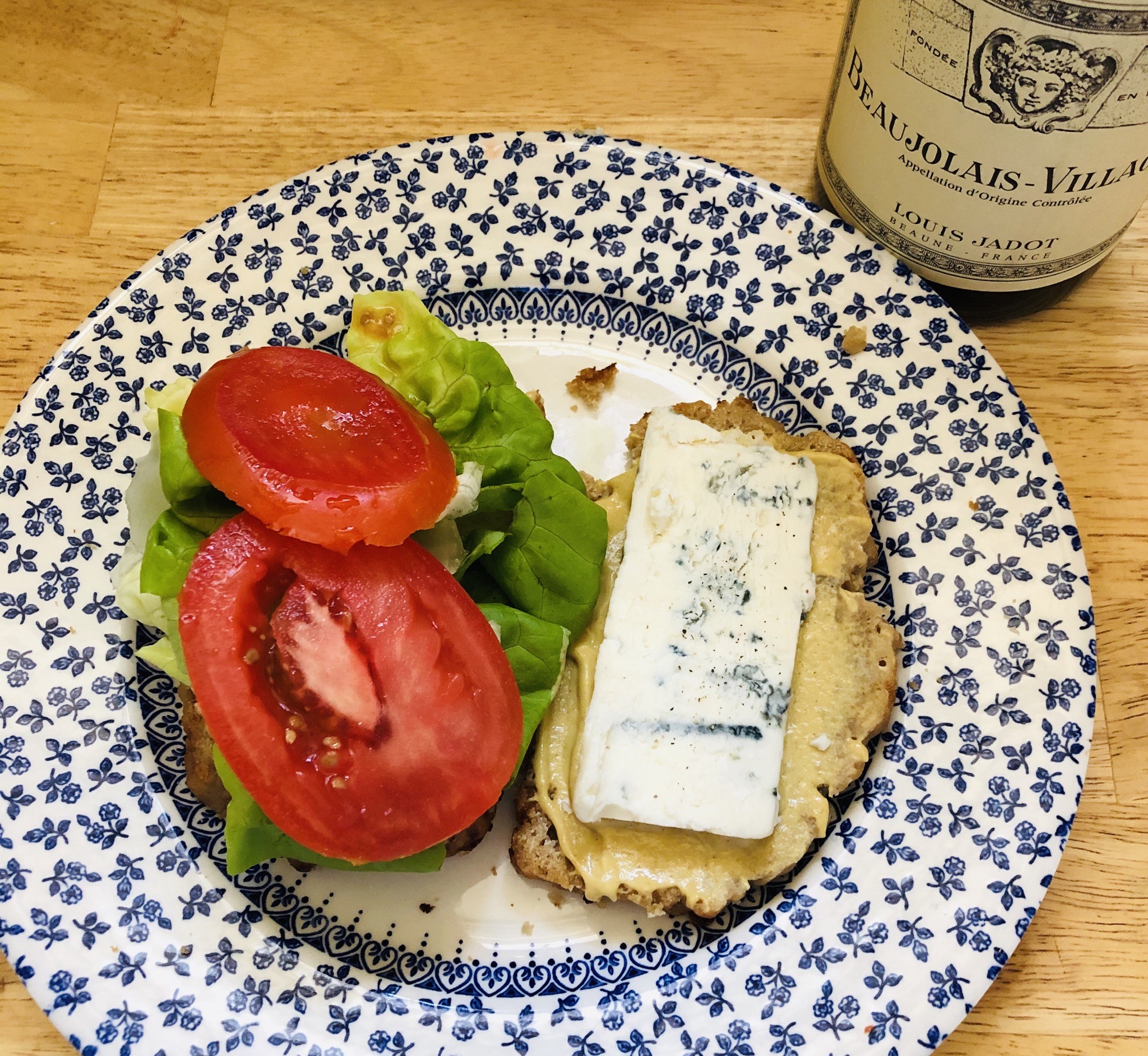
Gorgonzola, June 16th, & Ulysses
June 16, 2023by Katie Glaudell
While Aotearoa New Zealand’s landscape of volcanoes, glaciers, and mossy rainforests stands in sharp contrast to the Midwest, when I took a trip there last month with a friend, I found myself looking upon some familiar scenes: long stretches of rural highway, and pastures upon pastures of cows and sheep.
Agriculture is New Zealand’s largest industry, and most farms keep to the seasonal pasture system–resulting in happier livestock and better food.
While my travel buddy and I made plenty of picnic lunches and at-home dinners, the favorable exchange rate allowed us to gorge on fresh seafood and the most incredible lamb dishes imaginable. And course, as a faithful Marché monger, I had to visit a few cheese shops and wineries along the way!
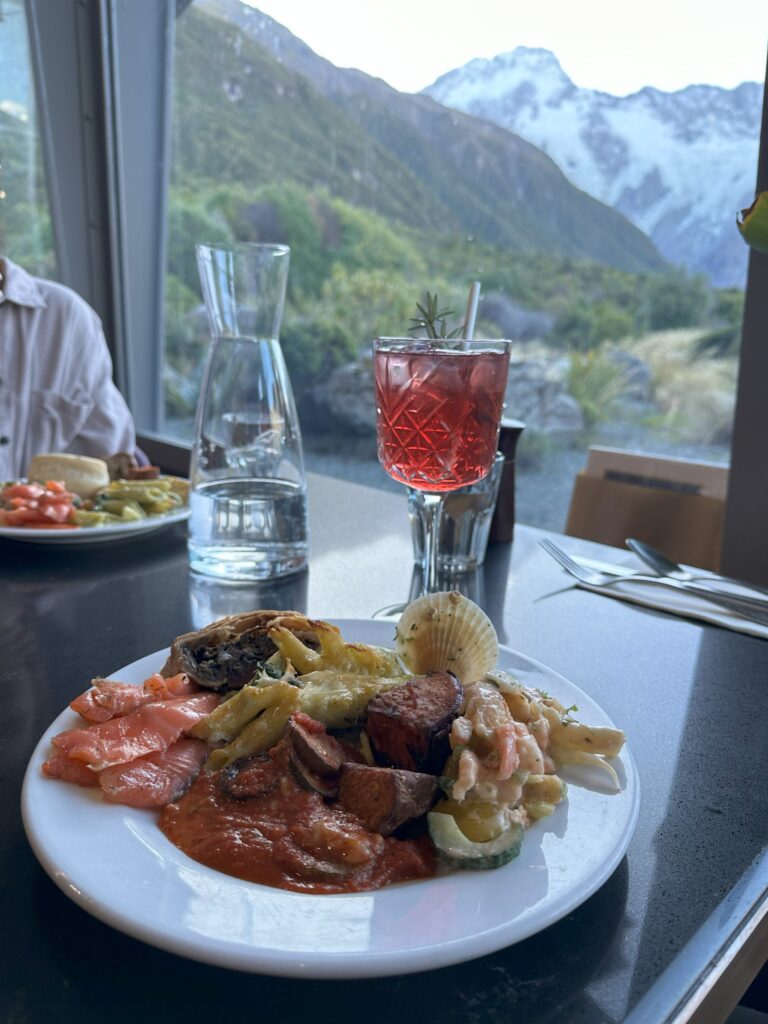
New Zealand Cheese Shops
C’est Cheese – Featherston, North Island
Owner Paul Broughton established this artisan shop in 2013 after quitting the corporate grind, focusing on high-quality local cheeses made from pasture-raised cows, sheep, and goats – about 90% of their selection is New Zealand-made. The shop is ideally located between the nation’s foodie capital Wellington and premier wine and dairy country in Martinborough. We chatted with the owner for a bit and I was reminded how small the world of artisan cheese is–a founder from Gourmino (producers of world champion Gruyère!) was visiting just the week prior to judge the New Zealand Champions of Cheese Awards. In fact, C’est Cheese has a few of those awards under their in-house label Remutaka Pass Creamery. Paul was happy to cut us some samples before we left with a respectable haul – our favorite pick being the Lemony Lush Chèvre from The Drunken Nanny family farmstead, located just thirty minutes away.
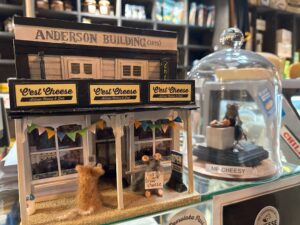
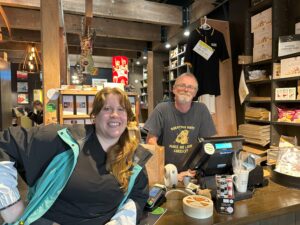
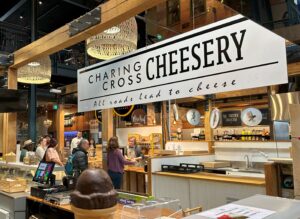
Charing Cross Cheesery – Christchurch, South Island
I stumbled across Charing Cross Cheesery by sheer luck on the last day of our trip, nestled into the bustling Riverside Market food hall in Christchurch Central City. I scooped up a couple morsels for the Marché team to try back home, and the stand-out favorite was Vintage Five Forks from Whitestone Cheese Co., two-time winner of the Outstanding New Zealand Food Producer Awards, and two-time winner by popular vote of New Zealand’s Favorite Cheesemaker. Reminiscent of Glen Ellyn’s favorite Prairie Breeze in appearance, Vintage Five Forks is a 50/50 cow and goat milk mix, sharp and sweet in flavor, and fudgy with a hint of tang. The closest thing to it in Marché’s cases is probably Triple Play Extra Innings, with cow, goat, and sheep milk for delightful complexity that changes as it warms on the palate.
New Zealand Wine
Knowing New Zealand’s reputation for citrus-forward Sauvignon Blancs, I was pleasantly surprised to find a much broader range of flavor profiles across that single varietal. As we scanned wine lists and grocery store bottles, we saw tasting notes of gooseberry, dried hay, white peach, pomegranate, passionfruit, and schist rock in addition to the classic lemon zest. I also noticed a recurrence of Gewürztraminer, Riesling, and Pinot Gris in vineyard tasting rooms along with the standard Chardonnay, while Pinot Noir was the dominant red. One of my personal favorites was a rosé from Poppies in Martinborough, with summery hints of fresh strawberries and crisp minerality–not too sweet or tart, just right!
At the top of the South Island is sunny Marlborough, responsible for over 70% of New Zealand’s wine production. We got the full experience here on a cruise of the stunning Marlborough Sounds, sipping local Sauvignon Blanc specially paired with a regional delicacy: Greenshell mussels caught in the Sounds the day before, steamed right there on the boat.
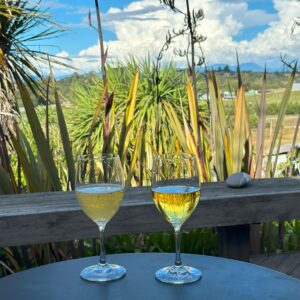
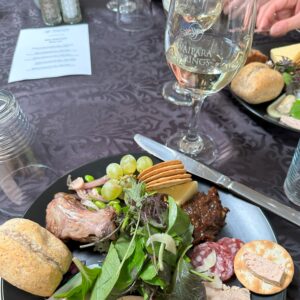
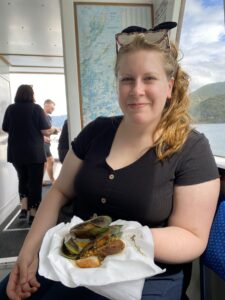
More New Zealand Food Favorites
- Māori Cultural Experience– Rotorua, North Island: An education on the indigenous culture, including a hāngī dinner (slow-cooking in stone-heated ovens buried in the ground), which honors the earth as the source of all life.
- Evening Banquet – Hobbiton Movie Set, North Island: After a sunset walking tour, this abundant feast showcased a blend of Hobbit and New Zealand cuisines, both rooted in traditional English fare.
- Hare & Copper – Turangi, North Island: Surrounded by fertile volcanic soil of Turangi farmland, this tapas-style fusion is inspired by the founding couple’s respective Kiwi and Mexican roots.
- The Landing – Franz Josef, South Island: I’m still dreaming about the pulled lamb croquettes with sweet plum dipping sauce and mint jelly at this bar with a view of the Southern Alps.
- Ditto – Te Anau, South Island: After working up an appetite hiking and kayaking around the Fiordland National Parks, Ditto’s Bao buns were so good we got them two days in a row.
- Hermitage Hotel – Aoraki Mt Cook Village, South Island: The Hermitage Hotel Buffet Dinner was worth the splurge–we ate our weight in house-smoked salmon while staring out the window at snow-capped mountains.
- Bakery Cafes: We started many mornings off with the most flaky buttery pastries, veggie pies, and carrot cake.
- Bulk candy section of any grocery store: The Sour Coke Gummies really do taste exactly like Coca-Cola.
- Frozen McFloats – McDonald’s (Macca’s): Don’t judge! The Orange Fanta with vanilla soft-serve was a dream.
- Wedge fries with sour cream & sweet chili sauce: A common New Zealand restaurant appetizer, I will definitely start making my own fries at home with this dipping sauce combo.
All this to say, I didn’t go to New Zealand expecting to be wowed by the cuisine, but I soon found myself proven wrong, immersed in a foodie culture of diverse gastronomical delights. Go for New Zealand’s natural wonders, stay for the food!
